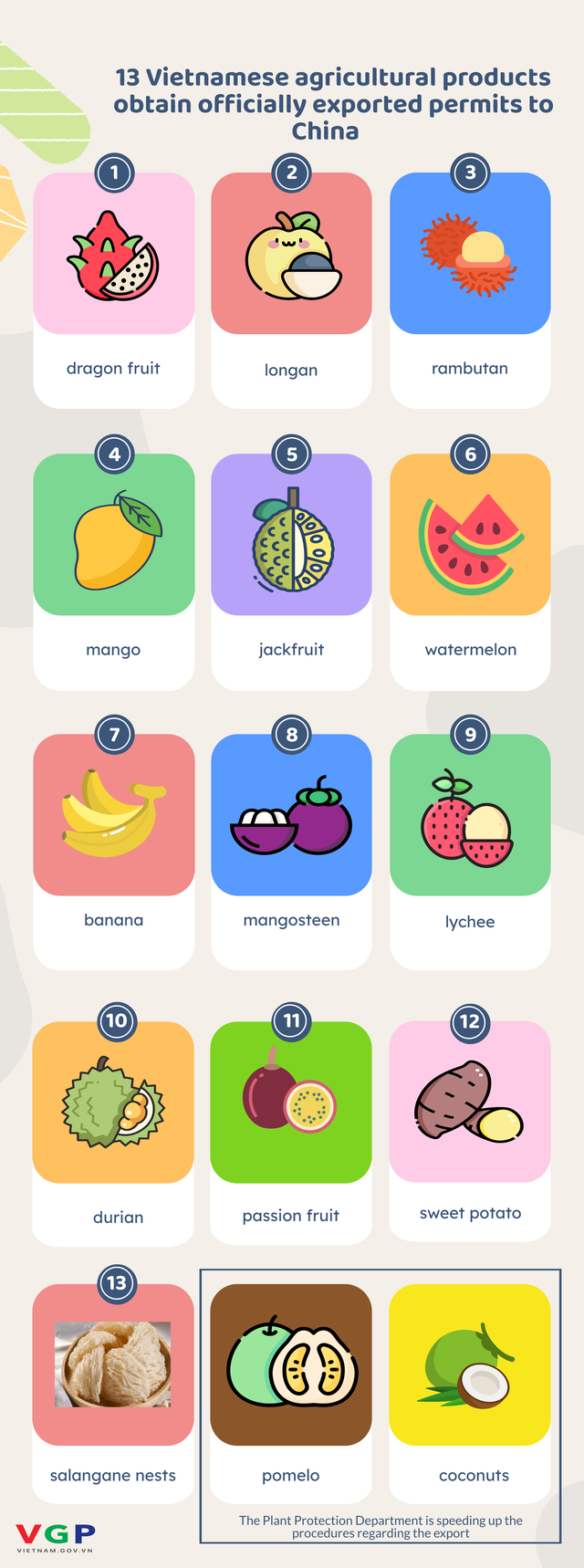Fruit, vegetable exports to China surge
VGP - Viet Nam’s shipment of fruits and vegetables to China valued at US$ 152 million in October, representing a year-on-year increase of over 44% thanks to new protocols on official import inked by both sides.
The Viet Nam General Department of Customs reported that total export turnover of fruits and vegetables reached US$ 310 million in October, up 23 percent against the previous month and 28 percent against October last year.
Noticeably, in October, export turnover of fruits and vegetables to China surged by 44 percent against the same period last year, totaling US$ 152 million.
As of late October, Viet Nam earned US$ 1.2 billion from selling vegetables and fruits to China, down 26 percent against the same period last year.
Dang Phuc Nguyen, General Secretary of the Viet Nam Fruit and Vegetable Association attributed that fruit and vegetable export turnover decrease to China’s “Zero Covid” strategy.
However, the market showed positive signs as a series of Vietnamese fruits and vegetables have recently obtained official import permits, namely passion fruit, durian, banana, salangane nests and sweet potatoes.
The MARD’s Plant Protection Department said that sweet potato and salangane nests are Viet Nam’s 12th and 13th agricultural products to be officially exported to the Chinese market.
Earlier, 11 local fresh fruits have entered the market, including dragon fruit, longan, rambutan, mango, jackfruit, water melon, banana, mangosteen, lychee and durian.
The Plant Protection Department will continue speeding up the procedures regarding the export of fresh pomelos and coconuts to the Chinese market in the time ahead.
Mr. Nguyen forecast that overseas shipment of fruits and vegetables would rebound in the rest of 2023 and grow about 20-30% as newly-signed protocols on official import from Viet Nam come into effect.
China is a huge market with great purchasing power, especially for agricultural products. Viet Nam’s agricultural export has the advantage of taste which is similar to the Chinese. However, this market has undertaken many changes in import policy, especially applying stricter regulations on product quality, food safety and traceability.
Experts suggested Vietnamese enterprises increase exports through official channels to China as Chinese consumers now demand higher quality products.

